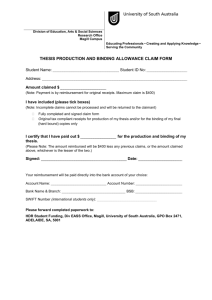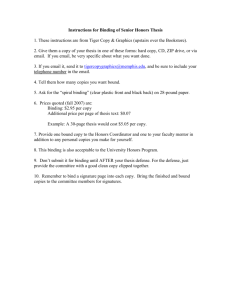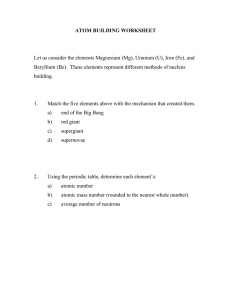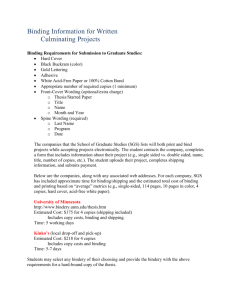Music
advertisement
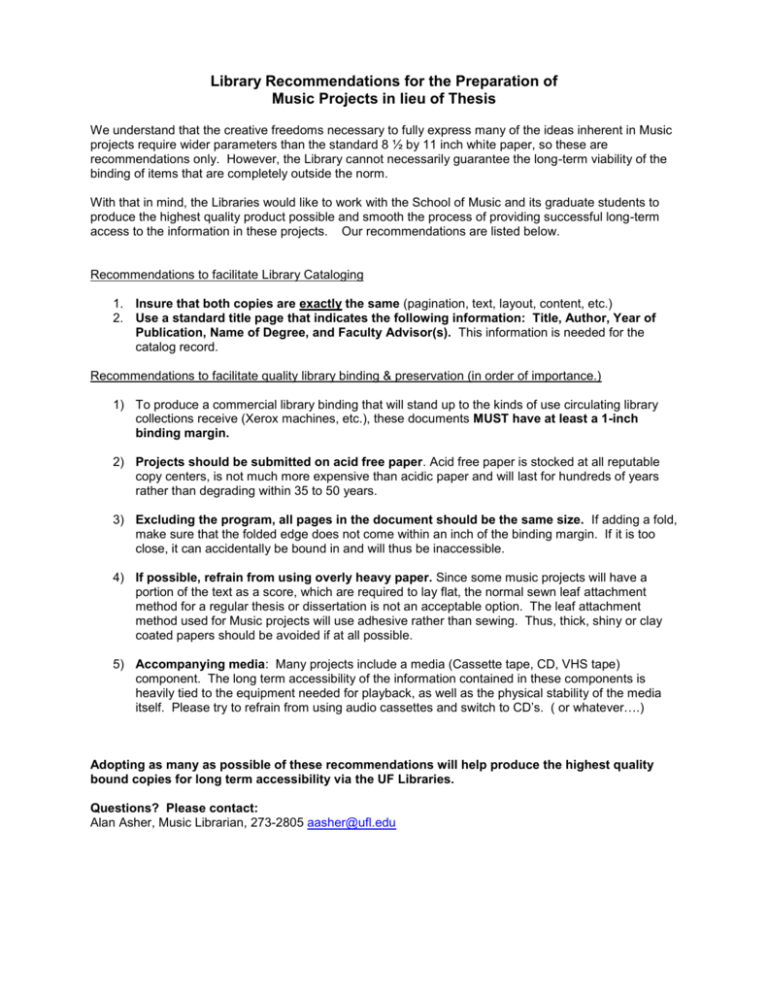
Library Recommendations for the Preparation of Music Projects in lieu of Thesis We understand that the creative freedoms necessary to fully express many of the ideas inherent in Music projects require wider parameters than the standard 8 ½ by 11 inch white paper, so these are recommendations only. However, the Library cannot necessarily guarantee the long-term viability of the binding of items that are completely outside the norm. With that in mind, the Libraries would like to work with the School of Music and its graduate students to produce the highest quality product possible and smooth the process of providing successful long-term access to the information in these projects. Our recommendations are listed below. Recommendations to facilitate Library Cataloging 1. Insure that both copies are exactly the same (pagination, text, layout, content, etc.) 2. Use a standard title page that indicates the following information: Title, Author, Year of Publication, Name of Degree, and Faculty Advisor(s). This information is needed for the catalog record. Recommendations to facilitate quality library binding & preservation (in order of importance.) 1) To produce a commercial library binding that will stand up to the kinds of use circulating library collections receive (Xerox machines, etc.), these documents MUST have at least a 1-inch binding margin. 2) Projects should be submitted on acid free paper. Acid free paper is stocked at all reputable copy centers, is not much more expensive than acidic paper and will last for hundreds of years rather than degrading within 35 to 50 years. 3) Excluding the program, all pages in the document should be the same size. If adding a fold, make sure that the folded edge does not come within an inch of the binding margin. If it is too close, it can accidentally be bound in and will thus be inaccessible. 4) If possible, refrain from using overly heavy paper. Since some music projects will have a portion of the text as a score, which are required to lay flat, the normal sewn leaf attachment method for a regular thesis or dissertation is not an acceptable option. The leaf attachment method used for Music projects will use adhesive rather than sewing. Thus, thick, shiny or clay coated papers should be avoided if at all possible. 5) Accompanying media: Many projects include a media (Cassette tape, CD, VHS tape) component. The long term accessibility of the information contained in these components is heavily tied to the equipment needed for playback, as well as the physical stability of the media itself. Please try to refrain from using audio cassettes and switch to CD’s. ( or whatever….) Adopting as many as possible of these recommendations will help produce the highest quality bound copies for long term accessibility via the UF Libraries. Questions? Please contact: Alan Asher, Music Librarian, 273-2805 aasher@ufl.edu

